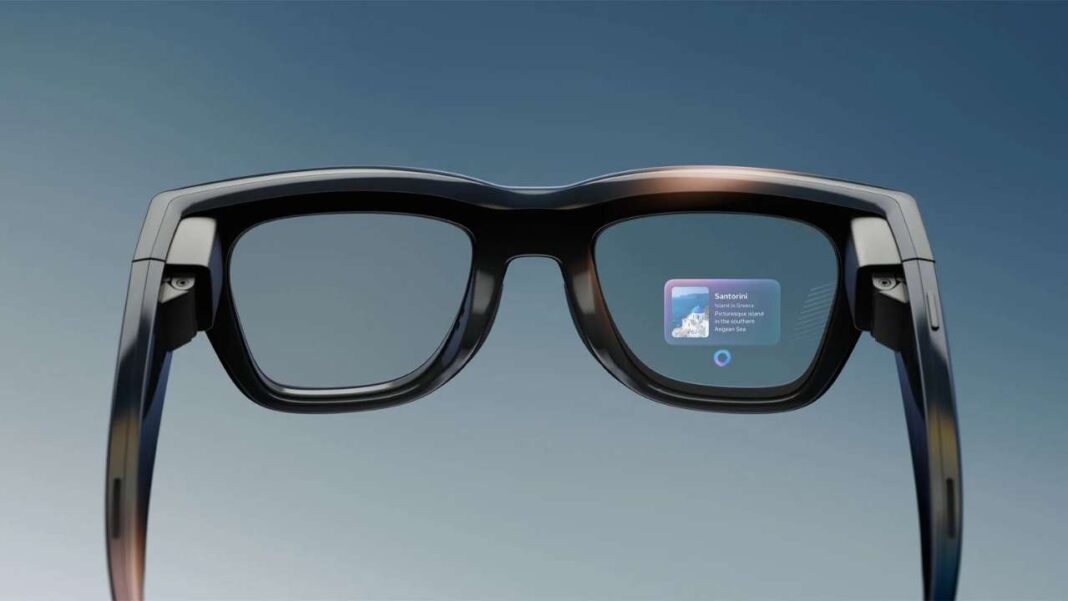Meta Ray-Ban and Oakley Smart Glasses: There are more wearable technologies in the future than just fitness trackers and smartwatches. The Meta Ray-Ban and Oakley Smart Glasses have made it harder than ever to tell the difference between fashion and technology. These glasses are designed to be useful tools that bring augmented reality (AR), artificial intelligence (AI), and seamless connectivity right to your eyes. They aren’t just for looks.
A Stylish Way to Use Wearable Tech
One of the biggest problems with wearable technology has always been design. People don’t want to wear things that look geeky or out of place. Meta has smartly dealt with this problem by working with well-known eyewear brands like Oakley and Ray-Ban.
The glasses keep the classic frames that these brands are known for, like the Ray-Ban Wayfarer and Oakley’s bold, sporty look, which makes them look like regular high-end glasses. This means you can wear them to work, a party, or even while driving without feeling weird about wearing “tech gear.”
More Than Just Vision Features
The technology inside is what makes them work, even though they look like fashionable sunglasses. The Meta Smart Glasses have built-in cameras, speakers, and microphones, which give them a lot of features that make everyday tasks smarter and more interesting.
• AI Assistant That Listens to Your Voice: Just say “Hey Meta” to get information, set reminders, or control features without having to reach for your phone.
• Take Photos and Videos Without Using Your Hands: With just a tap on the frame, you can take 12 MP photos or record short video clips. This is great for travelers, content creators, or anyone who wants to capture the moment right away.
• Open-Ear Audio: The arms have tiny directional speakers that let you listen to music, podcasts, or calls without blocking out other sounds.
• AR Integration (Future-Ready): The first versions have notifications and live translations. Future updates are expected to add AR overlays, which will make these glasses a step toward full-fledged augmented reality.
Specifications and Important Technical Details
The new Meta Smart Glasses aren’t just a gimmick; they have real hardware inside.
• Camera: 12 MP ultra-wide lens that can record 1080p video
• Audio: Five microphones with noise cancellation and open-ear speakers
• Battery Life: Up to 6 hours of use (with a portable charging case, 24 hours more)
• Connectivity: Bluetooth 5.3 and Wi-Fi
• Storage: Cloud backup through the Meta app
• Weight: About 50 grams (light enough to use every day)
The glasses come with a charging case that also protects them, just like how earbuds are made.
Problems and protections for privacy
Privacy is a big worry when it comes to smart glasses. People may not like it when you have cameras on your face. To fix this, Meta added an LED light that turns on when the camera is recording. Voice commands and recorded media are also kept safe, and the companion app lets you delete data. The business is working to make sure that everything is open and used responsibly, even though there are still problems.
Basic Examples of Use
The fact that these smart glasses fit so well into everyday life is what makes them so beautiful. Imagine getting translations in real time while you’re traveling abroad, streaming a bike ride from your point of view, or taking a call while you’re out walking without having to pull out your phone. These glasses give professionals, content creators, and fitness fans new ways to interact without using their hands.
Availability and Cost
The Ray-Ban Smart Glasses cost about $299 (₹25,000), and the Oakley versions cost a little more because they are made for sports. They are being released in important markets around the world, and India will get them later in 2025 after wearable cameras get the go-ahead from the government.
In conclusion
The Meta Ray-Ban and Oakley Smart Glasses aren’t just another gadget; they’re a big step toward the future of wearable tech. They solve the biggest problem with adoption, which is design, by combining classic fashion with the latest technology. These glasses already have useful features like calls, music, and hands-free content capture, even though they are still in the early stages of AR integration. For now, they might only be popular with techies, creators, and people who travel a lot, but as more features are added and prices drop, they could be the start of smart eyewear becoming more common.

